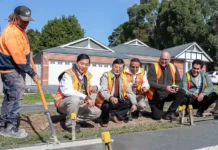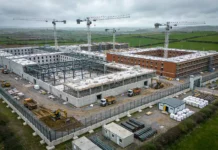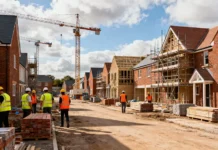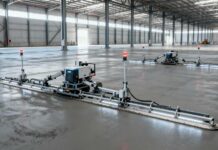What began as a reconnaissance project for the military, developed into a new, wearable device, scheduled for field testing this summer, which quickly maps the three-dimensional geometry and energy efficiency of buildings.
“Our focus was to recover the floor plans of a building in one walkthrough,” says Avideh Zakhor, professor of electrical engineering at the University of California Berkeley, Berkeley, Calif., whose research began as a Department of Defense project in 2007, with the goal of creating a reconnaissance instrument that can be worn by a soldier and recover the layout and geometry of any building or room as the soldier walks.
Over the past seven years the instrument morphed into today’s Rapid Building Energy Modeler (RAPMOD). It is worn as a backpack and outfitted with a Light Detection and Ranging (LiDAR) scanner, an inertial measurement unit and a visible light camera, says Zakohr. The sensors generate a photo-realistic 3D model of the building’s interior. An infrared sensor was added to measure the heat from lighting units, plug loads, window to wall ratio and other factors that affect heating and cooling a building, says Zakohr.
Capturing the thermal map came at the suggestion of Philip Haves, leader of the Simulation Research Group in the Environmental Energy Technologies Division of Lawrence Berkeley National Laboratories, who partnered with Zakohr in 2012 along with Bauman Consulting, to adapt her technology to generate energy models.
“The folks at Berkeley Labs have been working with building energy efficiency for years,” says Zakohr. She adds that beyond mapping a building’s energy efficiency, RAPMOD can be used by the construction industry to monitor a subcontractor’s progress.
“With one backpack walkthrough you can collect all the data necessary to tell what percentage of the job the sub has completed to date,” says Zakohr. “It can also be used to collect as-builts.”She says the main goal of the project is to help in retro commissioning of a building. “After analyzing the data we capture, you can fine-tune the energy performance of the building,” she says.
Another benefit of RAPMOD is that it doesn’t require energy experts to operate, which lowers its usage cost. After a technician captures data in a walkthrough, it can be uploaded directly into energy modeling software. Zakohr says her team is now looking for construction industry partners.
“We’d like to do pilot projects with companies in the AEC space in order to fully understand all the use cases,” says Zakohr. “Once we start a dialogue with the companies we can really understand the true value of the system.”
As for the cost, Zakohr isn’t yet sure if it will be offered as a service or a device for purchase. “We’re still fine tuning the business model for RAPMOD,” she says.




























